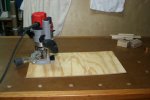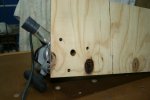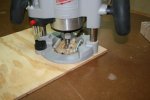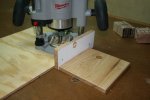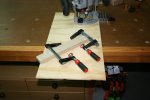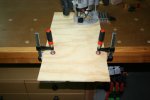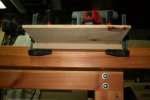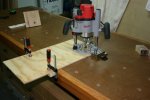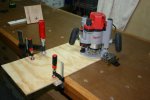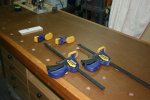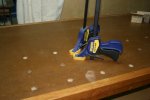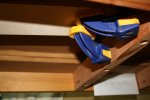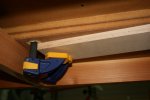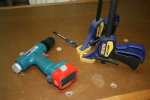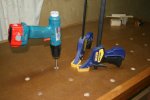glenn bradley
Member
- Messages
- 12,068
- Location
- SoCal
Stop me if you've heard this one . . . "I decided I needed more dog holes . . . "
I figured out that my current project would go easier if I had more hold down locations on the bench so I took about an hour after work and added some. I've used several methods and I'm sure some work better than others in different materials. I use my Vari-o-Dog and a piece of 5/8" scrap to assure a consistent offset. This is of course much easier once you already have a set of holes to use as a guide.
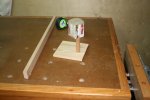
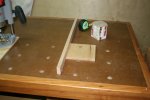
I use a router and a precision locating jig (read "a board") for a nice clean entrance hole. The vac hook up really keeps the chips down. I finish the hole with a backer board and a big ole brad point bit.

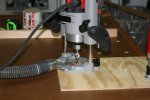
Clamping on a backer board to avoid blowout is easier once you have some existing holes too. There, another dozen holes ought to do me for awhile.
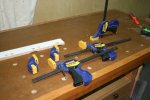

I figured out that my current project would go easier if I had more hold down locations on the bench so I took about an hour after work and added some. I've used several methods and I'm sure some work better than others in different materials. I use my Vari-o-Dog and a piece of 5/8" scrap to assure a consistent offset. This is of course much easier once you already have a set of holes to use as a guide.


I use a router and a precision locating jig (read "a board") for a nice clean entrance hole. The vac hook up really keeps the chips down. I finish the hole with a backer board and a big ole brad point bit.


Clamping on a backer board to avoid blowout is easier once you have some existing holes too. There, another dozen holes ought to do me for awhile.


Last edited:



